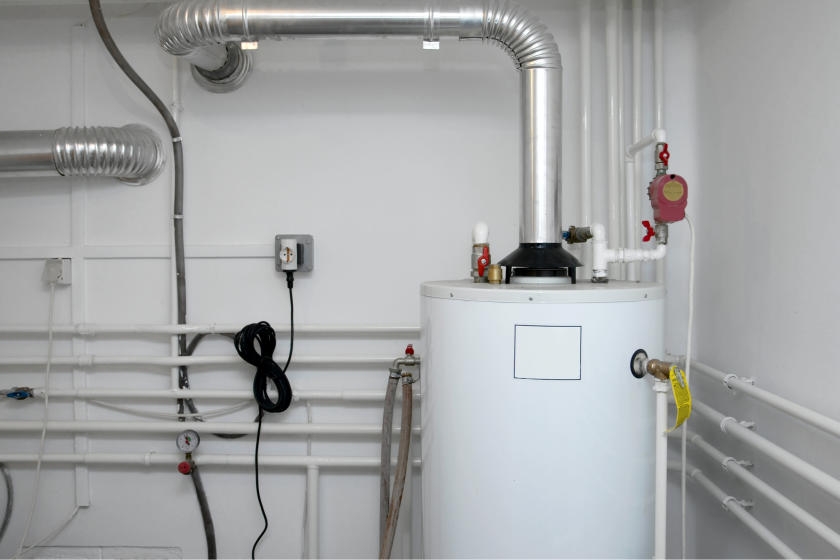Making Sure Durability of Your Home's Hot Water System: Care AdviceSimple Steps to Caring for Your Home's Hot Water System
Making Sure Durability of Your Home's Hot Water System: Care AdviceSimple Steps to Caring for Your Home's Hot Water System
Blog Article
Do you find yourself looking for advice about Tips on Maintaining a Water Heater?

Hot water is necessary for daily convenience, whether it's for a refreshing shower or washing recipes. To ensure your hot water system runs successfully and lasts longer, routine upkeep is vital. This write-up provides functional pointers and insights on exactly how to keep your home's hot water system to prevent disturbances and expensive fixings.
Introduction
Maintaining your home's warm water system could seem difficult, yet with a few simple steps, you can ensure it runs efficiently for years to come. This guide covers every little thing from recognizing your warm water system to do it yourself upkeep tips and understanding when to contact expert assistance.
Value of Maintaining Your Warm Water System
Regular maintenance not only extends the life expectancy of your hot water system however additionally guarantees it runs successfully. Ignoring maintenance can result in decreased efficiency, greater energy bills, and also premature failing of the system.
Indicators Your Hot Water System Demands Upkeep
Knowing when your hot water system needs interest can protect against major issues. Look out for indications such as inconsistent water temperature, odd sounds from the heater, or rusty water.
Recognizing Your Warm Water System
Before diving right into upkeep tasks, it's helpful to comprehend the fundamental parts of your hot water system. Commonly, this consists of the water heater itself, pipelines, anode rods, and temperature controls.
Regular Monthly Maintenance Tasks
Normal month-to-month checks can help catch small concerns before they rise.
Purging the Hot Water Heater
Flushing your water heater removes debris buildup, enhancing efficiency and lengthening its life.
Monitoring and Replacing Anode Rods
Anode poles prevent corrosion inside the storage tank. Evaluating and replacing them when worn out is important.
Examining and Adjusting Temperature Level Settings
Readjusting the temperature setups ensures optimum efficiency and safety and security.
DIY Tips for Maintenance
You can carry out numerous upkeep jobs on your own to maintain your hot water system in leading condition.
Checking for Leaks
On a regular basis check pipes and connections for leaks, as these can bring about water damage and higher costs.
Examining Stress Alleviation Valves
Evaluating the stress safety valve ensures it functions appropriately and prevents extreme pressure build-up.
Insulating Pipelines
Protecting hot water pipelines decreases warmth loss and can save power.
When to Call an Expert
While DIY upkeep is helpful, some issues require professional expertise.
Complicated Concerns Needing Professional Assistance
Examples consist of major leakages, electrical issues, or if your water heater is constantly underperforming.
Routine Specialist Maintenance Perks
Professional upkeep can include complete inspections, tune-ups, and making sure compliance with security standards.
Final thought
Normal maintenance of your home's warm water system is necessary for efficiency, durability, and cost savings. By adhering to these tips and understanding when to look for professional assistance, you can make certain a reputable supply of warm water without unexpected interruptions.
Water Heater Maintenance Tips
Test the TPR Valve
Shut off the power and the cold-water supply valve. Place a bucket under the pipe connected to the temperature-pressure-release (TPR) valve on the top or side of the tank. (This valve opens if the tank pressure gets too high.) Lift the valve’s tab to let some water out, then let go. If water keeps flowing, drain the tank partway, unscrew the old valve with a pipe wrench, and install a new one. Check the Anode Rod
Put a hose to the tank’s drain cock and let out a few gallons of water. Now fit a 1 1/16-inch socket onto the rod’s hex head on top of the heater (or under its top plate) and unscrew the rod. If it’s less than ½ inch thick or coated with calcium, buy a new one, wrap its threads with Teflon tape, put it back in the tank, and tighten securely. Use this segmented rod if headroom above the tank is limited. Drain the Tank and Wash Out Sediment
Drain the remaining water in the tank into the bucket, then stir up the sediment on the tank’s bottom by briefly opening the cold-water supply valve. Drain and repeat until clean water comes out of the hose. Close the drain cock, refill the tank, and turn its power back on. Adjust the Temperature
Find the temperature dial on the side of the tank and unscrew its cover. Adjust the dial to 120 degrees using a flathead screwdriver. For every 10 degrees the temperature is lowered, you can expect to save up to 5 percent in energy costs. Turn the water heater off or the thermostat down to its lowest setting if you plan to be away from home for more than three days. Insulate the Pipes
Buy some self-sticking 3/8-inch-thick foam pipe insulation that matches the pipes’ diameter. Slide the foam over the hot-and cold-water pipes as far as you can reach. Insulating the cold-water pipe prevents condensation in summer. Peel the tape and squeeze the insulation closed. If the pipe is 6 inches or less from the flue, cover it with 1-inch-thick unfaced fiberglass pipe wrap. https://www.thisoldhouse.com/plumbing/21016402/how-to-maintain-a-water-heater

I'm certainly very enthusiastic about How to Maintain a Hot Water Heater in a Few Simple Steps and I'm hoping you enjoyed reading our piece. Enjoyed reading our content? Please share it. Let other people check it out. I truly appreciate reading our article about What Kind of Maintenance Do Water Heaters Need?.
Click Here To Find Out More Report this page